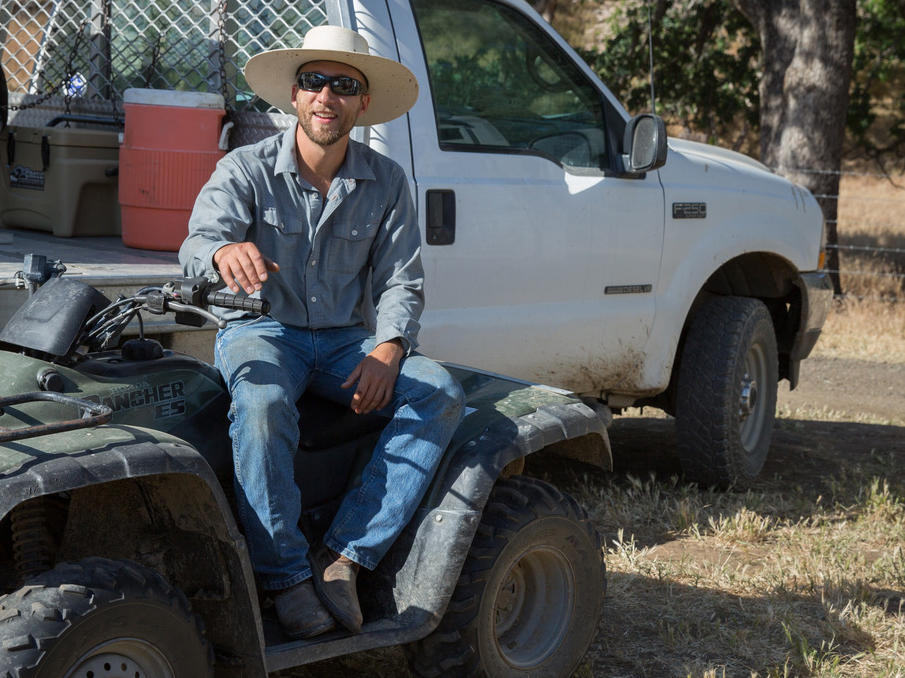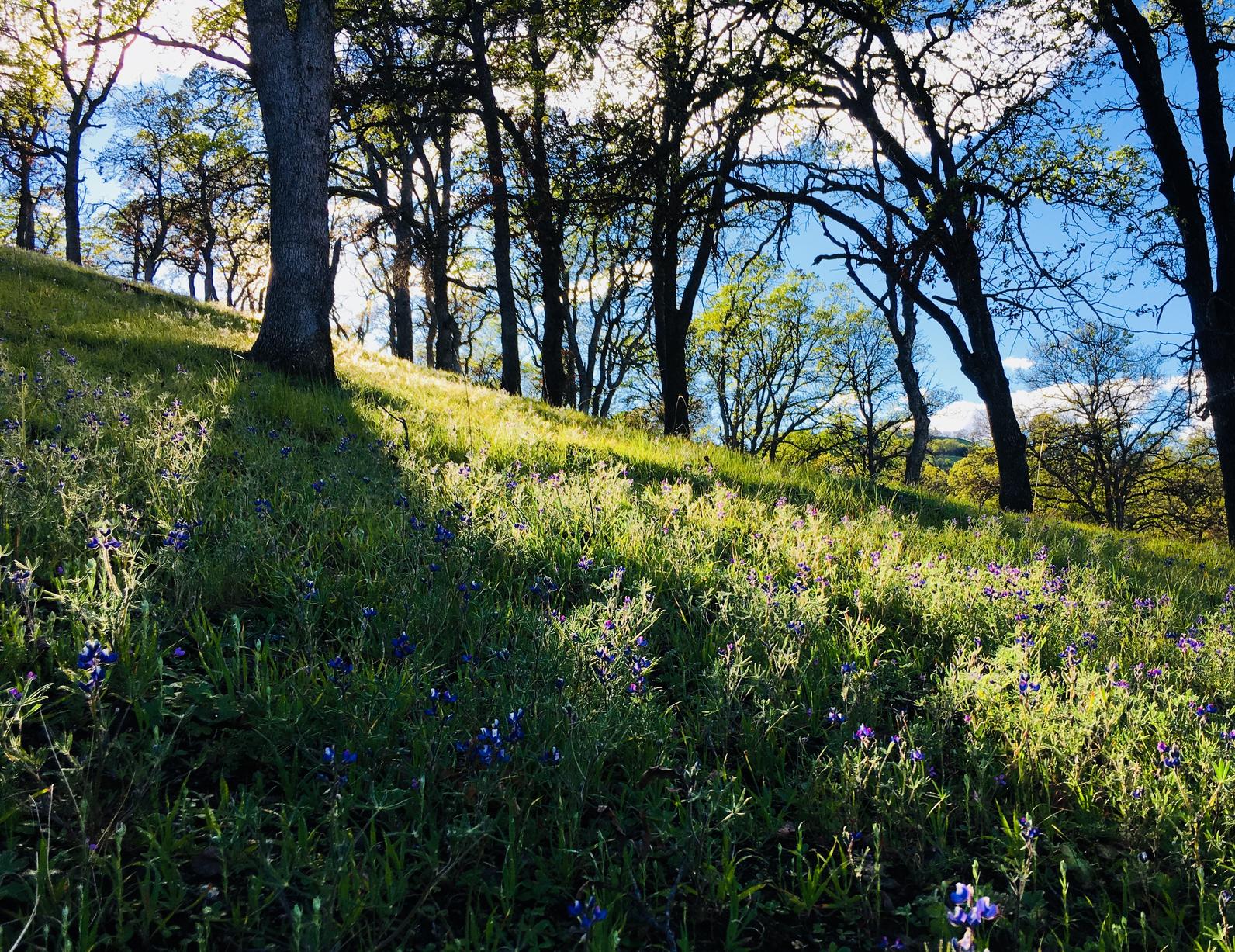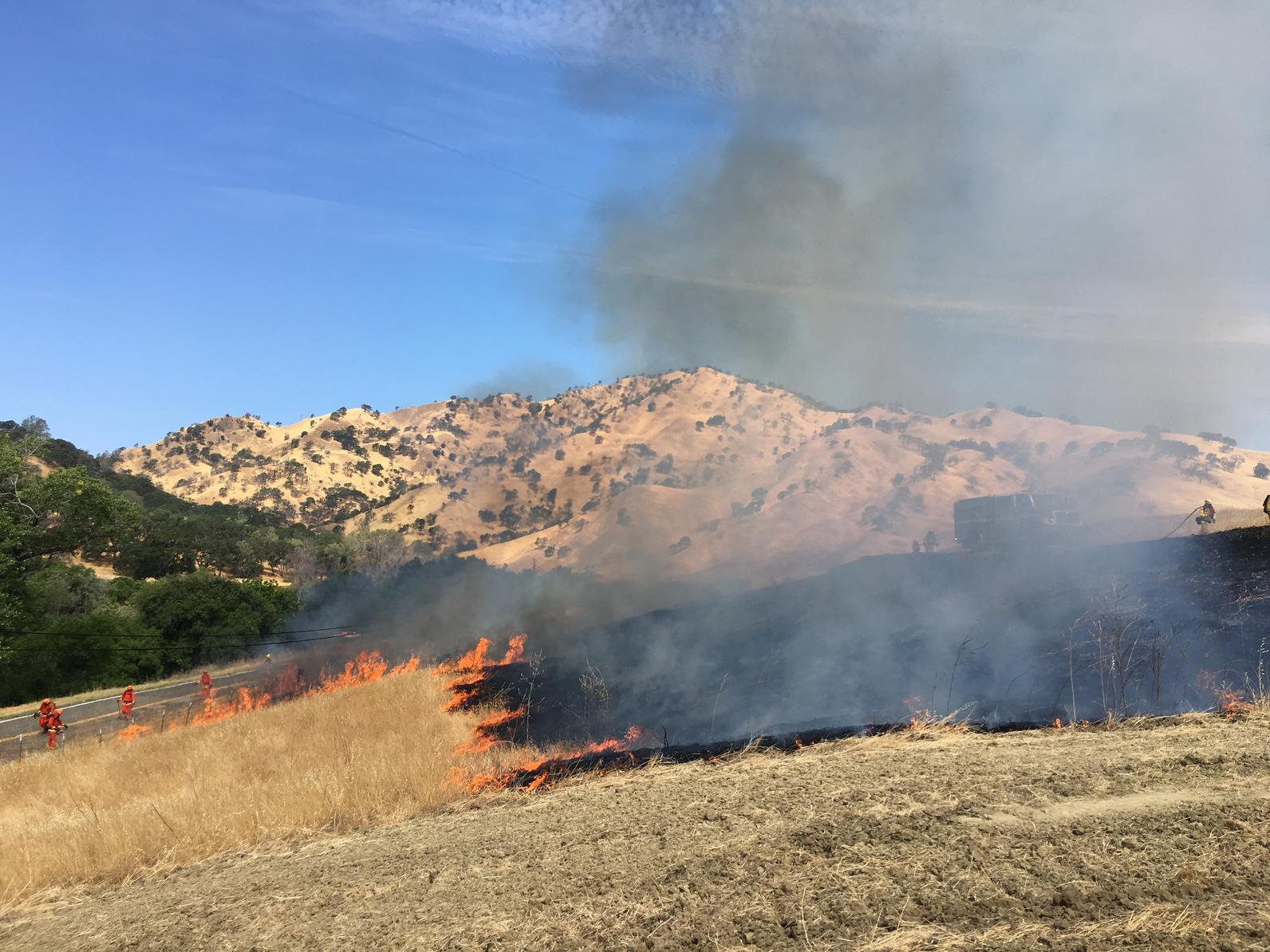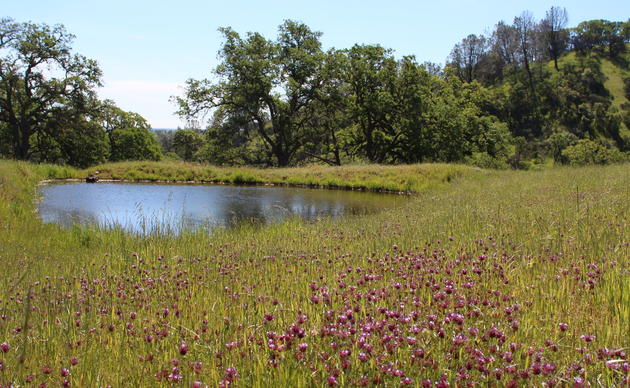
Bobcat Ranch is a 6,800 acre blue oak conservation property, and working cattle ranch owned and managed by Audubon. Each summer for the past 5 years, the ranch has been in the path of wildfires: the Wragg Fire, Monticello Fire, Cold Fire, Winters Fire, and most recently the County Fire. We had a few questions for our hard-working Ranch Manager, Dash Weidhofer.
Why does Bobcat Ranch burn so often?
Periodic wildfire is a crucial part of the ecology in California’s rangelands; it’s not surprising or necessarily bad that it burns. However, the frequency of these fires is unprecedented and can have myriad negative impacts on native vegetation, soils, and infrastructure. This increase in frequency (and often intensity, in historically fire-suppressed regions) is the new reality for rangelands in California, as we begin to see and feel the effects of climate change – especially the production of longer, drier, and hotter summers.
Bobcat Ranch borders over 3 miles of road frontage along Highway 128 – a popular recreational corridor for visitors to Lake Berryessa, Lake Solano, and Putah Creek. Many of the historic (and recent) ignition points have occurred along the highway due to vehicular issues, fireworks, and other human-related causes. The terrain adjacent to the highway is steep, and difficult to access – making it especially hard to manage fire fuels using livestock or heavy equipment. This leaves the highway frontage vulnerable to ignitions from passing vehicles and recreationalists.

What kind of preventative measures do you take?
This year I partnered directly with CalFire to develop and conduct a significant fire-fuels reduction project along Hwy 128 – our most vulnerable area to ignitions. The project involved over 80 acres of prescribed burns, 4-miles of work by hand-crews, and several miles of road grading (which serves as a good fire break).
Plans are underway to conduct annual road grading of key roads across the Ranch in anticipation of future fire incidents. These fire breaks will serve as contingency lines to protect the neighboring communities of Golden Bear and Positas. Some of this prevention planning was used successfully during the County Fire Incident – which resulted in significantly reduced burned acreage on the grazed portion of the Ranch, and limited damage to livestock fencing. Also, next Spring we hope to implement additional measures, including fire-fuels reduction using targeted grazing of sheep along the Highway 128 corridor.
In addition to our partnership with CalFire, I conduct routine preventative maintenance in and around all of our structures on the Ranch – creating ample defensible space. We used our new tractor to cut fire breaks around our structures to provide extra protection for the office and house. I keep a 750-gallon fire trailer at our head-quarters and have our tractors (including a borrowed Cat Dozer) staged and ready to cut fire breaks in the event of an ignition.
Also, I have carefully built up a network of neighbors, friends, and professionals (including the regional CalFire Chiefs, local Winters Fire Department, and Golden Bear Fire Safe Committee), which aids greatly in early communications, overall safety, and information sharing.

What happens now?
After the most recent fire, I worked with CalFire’s assigned Suppression Repair team to smooth out dozer lines, and re-grade our primary roads. Now I’m busy fixing breaches in livestock fence, a few broken pipes, picking up trash, and slowly buttoning up the Ranch post-burn while facilitating access for the last few crews out patrolling for hot-spots.
We anticipate, like our colleagues in Southern California, more frequent wildfires as a consequence of climate change. We will continue to partner with CalFire, and hope to develop more local partnerships to develop better prevention plans for our watershed. Last, we will continue to adapt and modify our grazing management to reduce fire fuel load in pertinent areas, and will share our experiences with our neighbors, ranchers, and the general public to enhance public awareness and education about fire safety in a changing climate.
Learn more about Bobcat Ranch here.
To support our work at Bobcat Ranch promoting bird-friendly cattle ranching practices and protecting and restoring native grassland habitat for birds click here.
Support Bobcat Ranch
Your gift supports our work to develop & promote bird-friendly cattle ranching practices in CA and to protect and restore native grassland habitat for birds.




